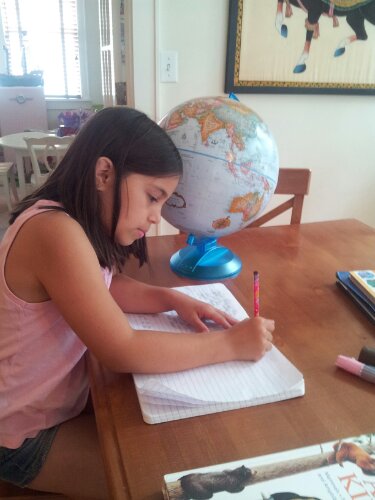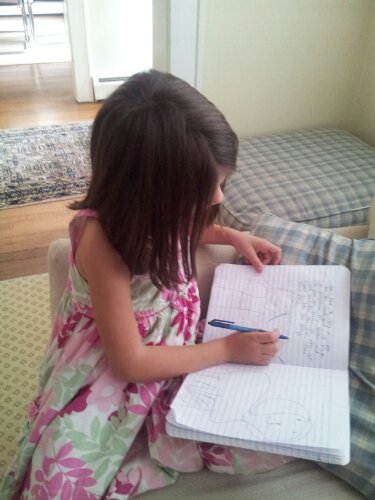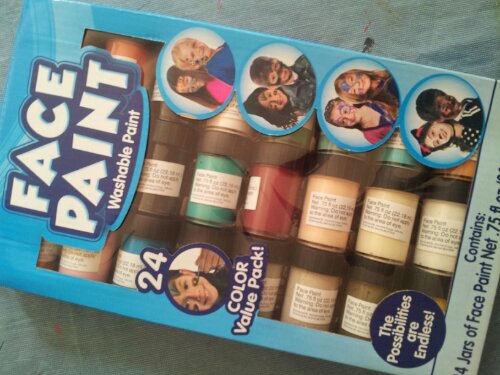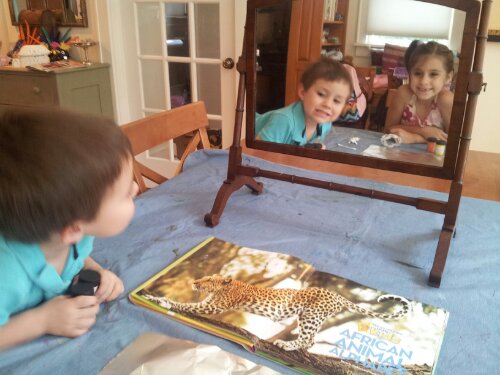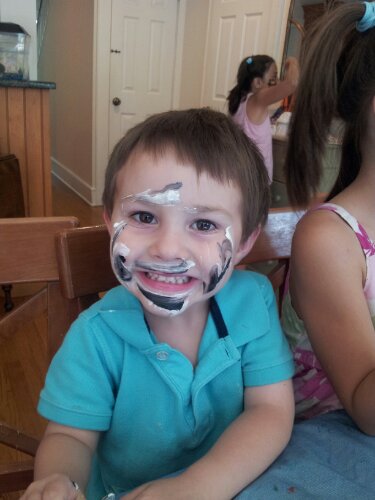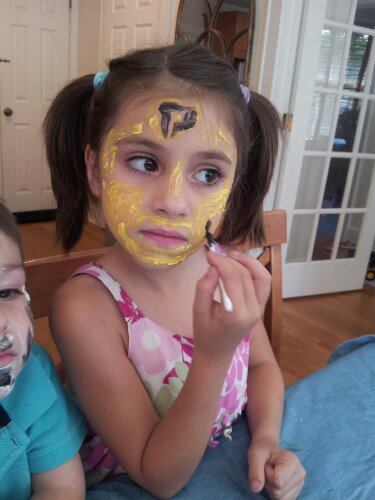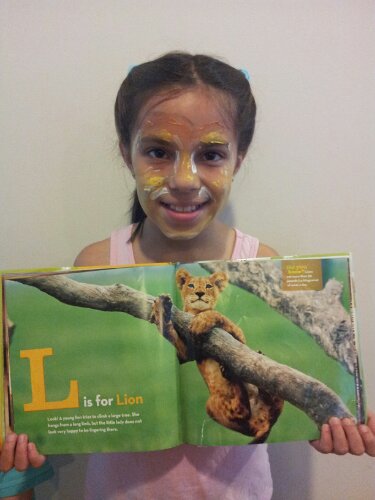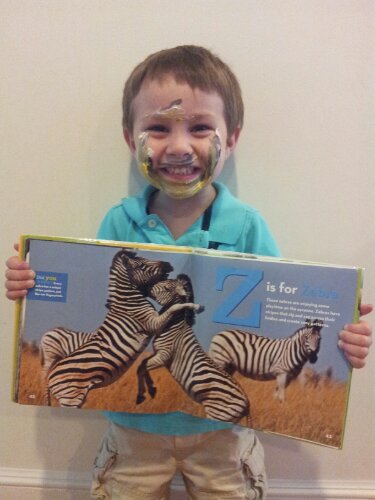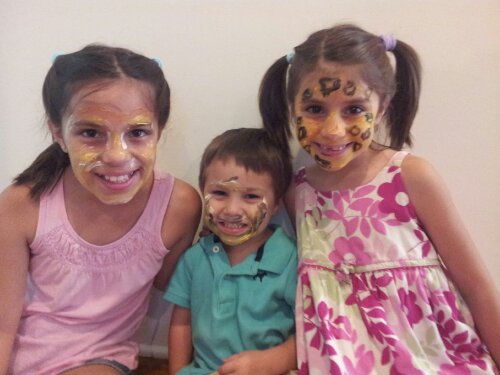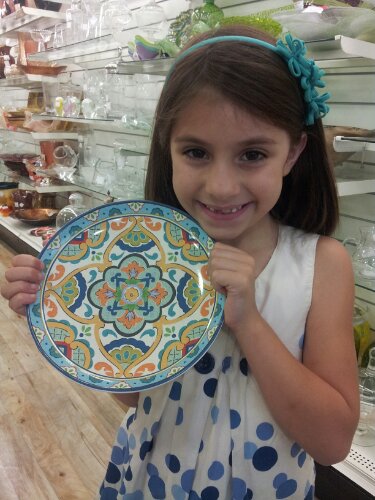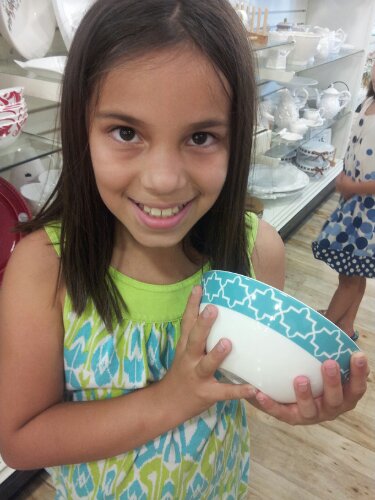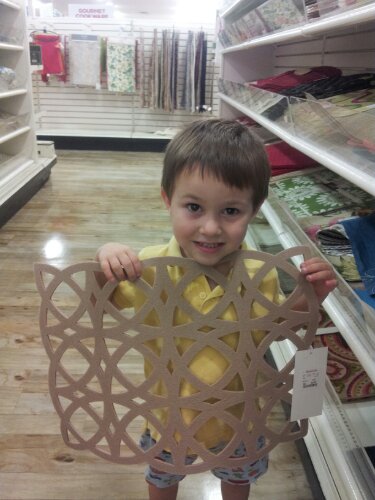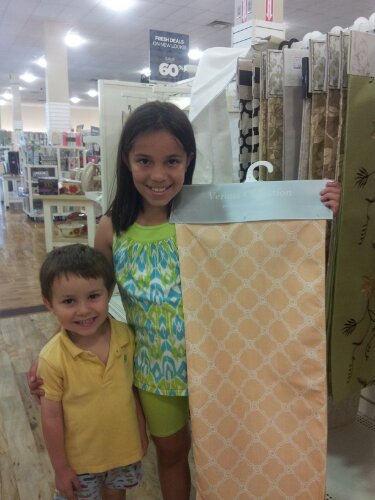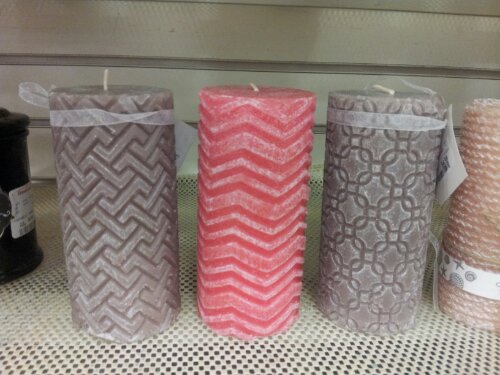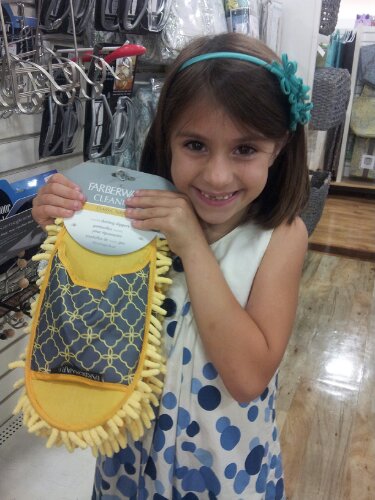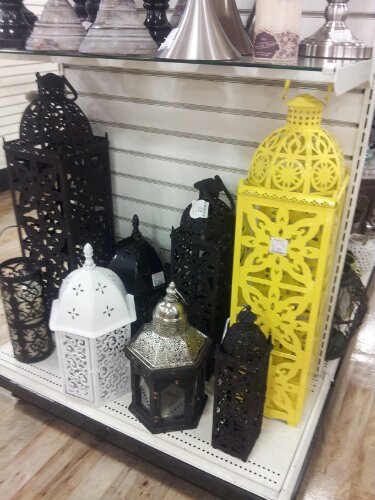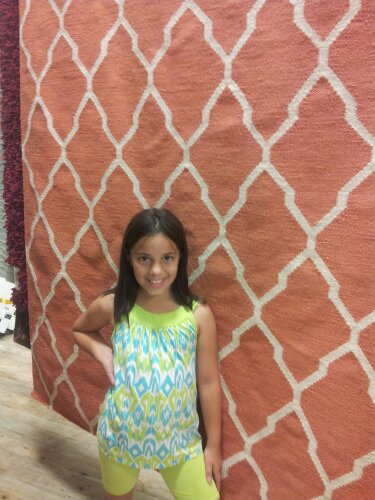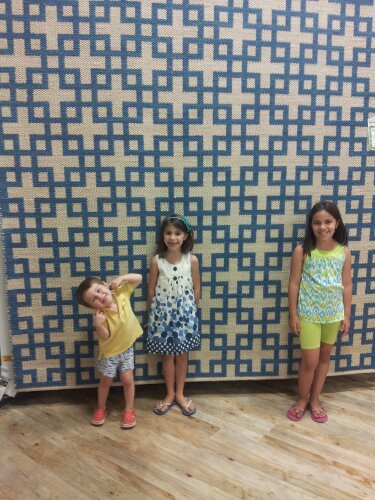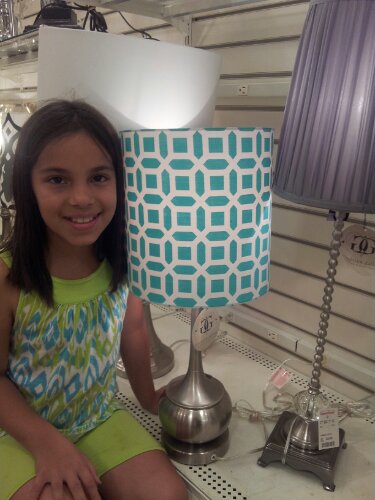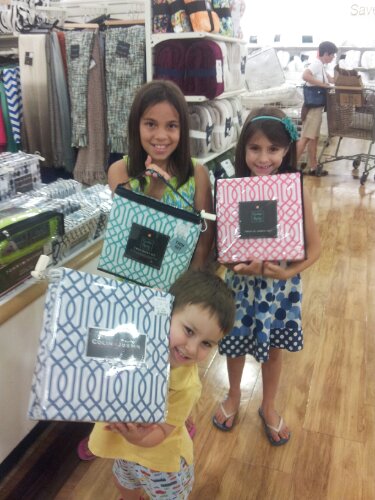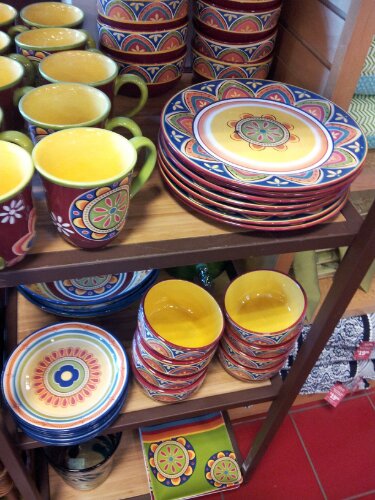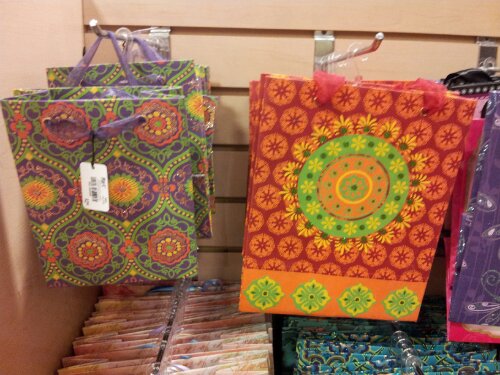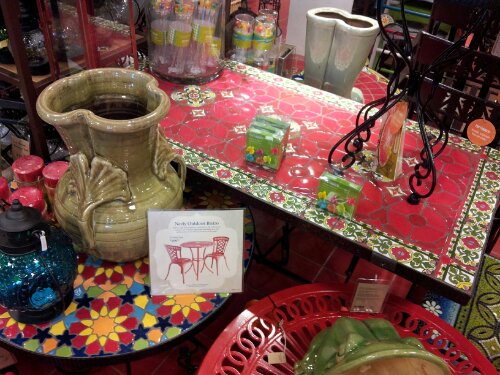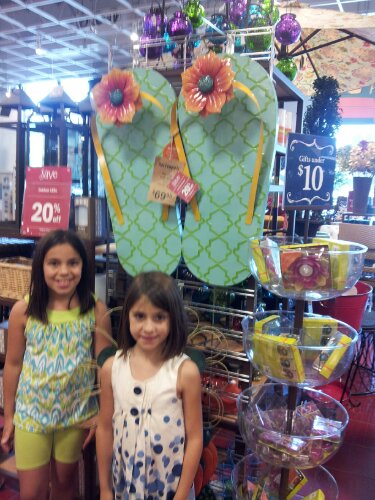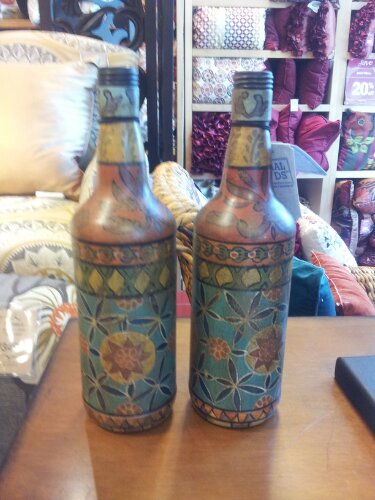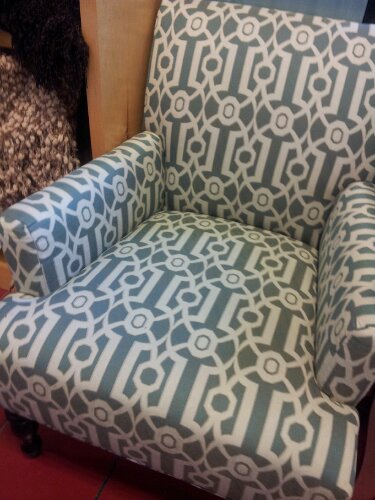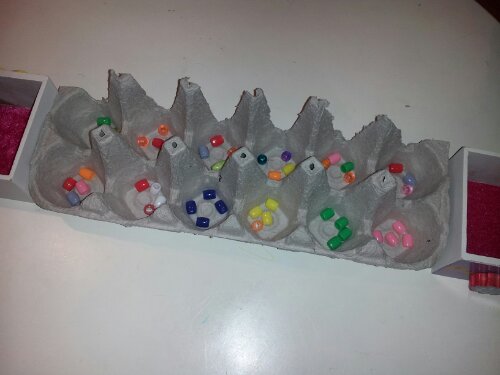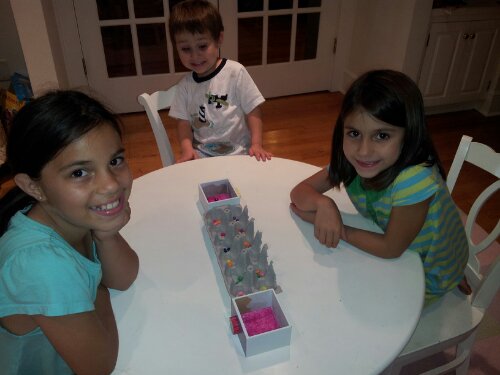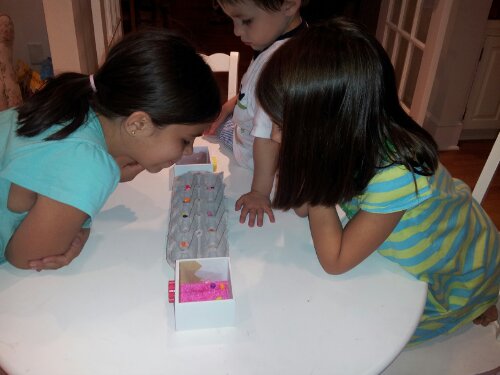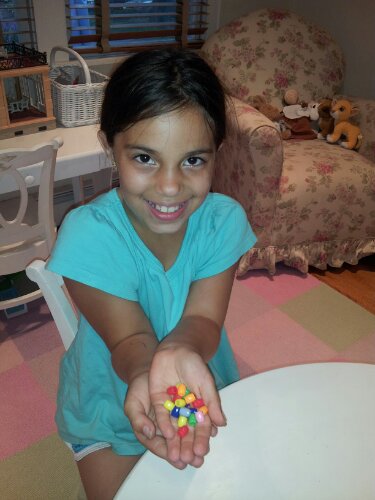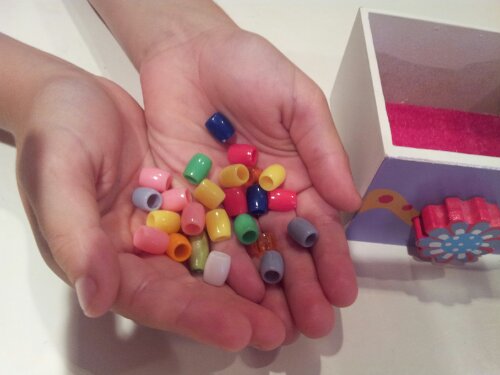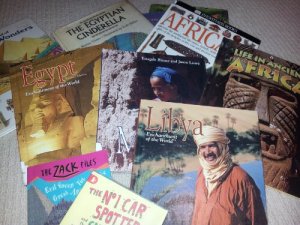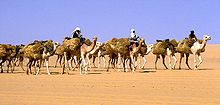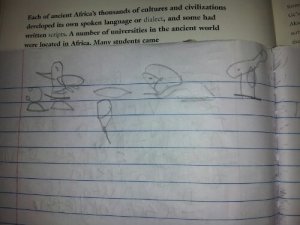
Today we spend some time reading and writing about the fascinating people and magnificent wildlife of Kenya.
From Kenya: Enchantment of the World we see pictures of Nairobi, the capital city, with its highrise buildings and urban feel. It’s hard to believe that the Masai Mara is only about 160 miles away, because the lifestyles are worlds apart. From the beautiful book Maasai the kids gain an understanding of the Maasai people, the nomadic tribe that lives in and near the Masai Mara much as they did 300 years ago.

We see pictures of the Maasai huts built of sticks and covered in animal dung for waterproofing. We learn that the Maasai use jewelry, clothing and body paint to honor each stage of life (similar to the way that husbands and wives wear wedding bands in our country).
We read about their rituals, such as the jumping dance, and notice that for Maasai warriors (Ilmoran) body paint often resembles animal markings. For today’s art activity the kids will use face paint to create their own animal prints. They are very excited! But first we talk more about the animals, the other interesting inhabitants of the Masai Mara’s golden grasslands.

From the picture book Africa Calling: Nighttime Falling the kids get a good idea of the expanse of the savannah (the Masai Mara is about 1500 sq km). In Kenya, the national reserve is called the Masai Mara, and in neighboring Tanzania, the grasslands are called the Serengeti, which translates to “endless plains.” From African Animal Alphabet we learn all sorts of cool things about the animals that live there. From teeny dung beetles, who fertilize the land spreading bits of animal droppings, to meerkats who eat poisonous scorpions, and lions who eat more than 30 pounds of meat a day, all the animals play an important role in the savannah.

The best way to see these majestic creatures, in their natural habitat, is on safari and I tell the kids about my own safari adventures. At one point, our jeep got completely stuck in the mud, deep in the savannah. Scary! Since safaris are full of adventure we use this as a topic for creative writing today. We talk about how they can be exciting, interesting, and bit dangerous, and then it’s time for the kids to write their own stories and imagine how their safari would end if their jeep was stuck in the mud…
CZ’s tale has an elephant who is tracking a peanut butter sandwich…
and AZ’s features a threatening giraffe and lion who comes home as a pet. Yikes!
Now onto facepaint…Here we see some examples of the Maasai warriors markings on their legs.
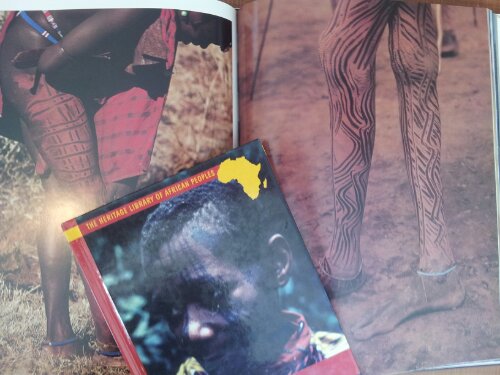
Young Maasai men use red paint as a symbol of strength. They wear their hair in long braids, also covered in red paint. They are given the best meat to eat as they need to be kept strong for hunting and fighting, and wear the brightest colored jewelry and clothes.
We don’t make our paint out of crushed berries and mud like the Maasai would and opt for a face paint kit instead..
First the kids decide which animals they would like to use as inspiration..
And then they get started…we use q tips as they seem easier to control than the paint brushes…
HZ’s zebra is getting his stripes…
AZ carefully paints some leopard spots…
The finished product:
CZ’s lion:
HZ adds some yellow to his zebra because he notices that in the picture many of the white stripes actually contain brown or light yellow.
Lions, and leopards and zebras, oh my!



